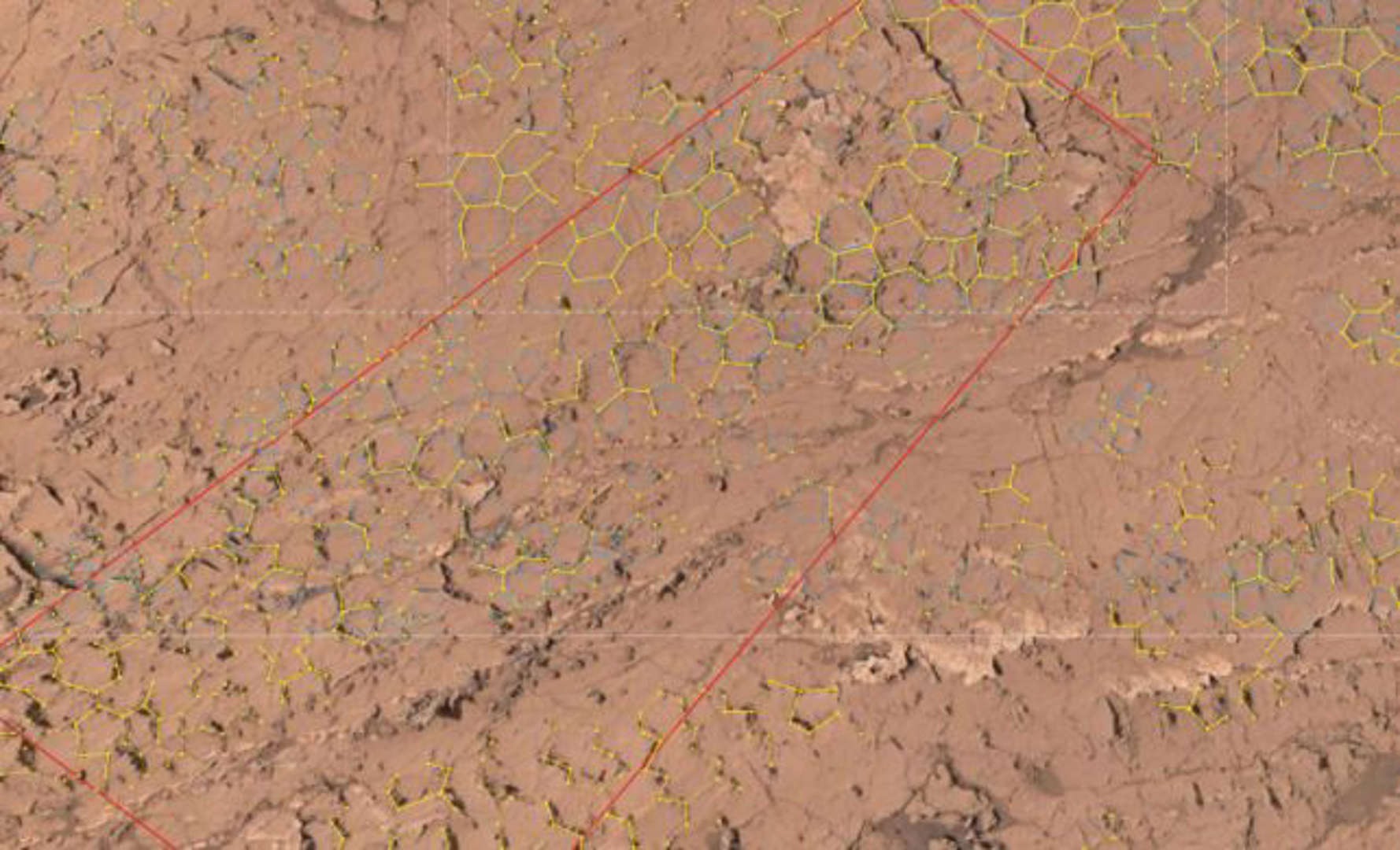Despite the current state of Mars as a dry and dead desert, recently discovered evidence suggests a very different story. Scientists discovered cyclical climate changes that probably occurred seasonally. This, in turn, could have a huge impact on the possibility of the emergence of life.

Hexagons found in Gale crater indicate the existence of cycles of wet and dry periods. These cycles allowed the minerals to dry out between periods of humidity, creating unique shapes that were later replaced by fossilized formations.
“We observe exhumed centimetric polygonal ridges with sulfate enrichments, joined at Y-junctions, that record cracks formed in fresh mud owing to repeated wet-dry cycles of regular intensity,” said the researchers, led by geochemist William Rapin from Paul Sabatier University in France.

Instead of abrupt hydrological events caused by volcanic activity or meteor impacts, the results suggest a stable, cyclical, possibly seasonal climate of ancient Mars. These studies once again confirm that the conditions there could be favorable for the origin of biological processes — the molecular basis of life.
Numerous proofs
Given the absence of tectonic activity on the surface of Mars, its archaeological “record”, dating back more than 4.3 billion years, is very well preserved. In this record, scientists have found numerous proofs of the past, when long-dried lakes, rivers and oceans existed on the neighboring planet.
The hydroclimate of early Mars is much more difficult to study. However, Rapin and his colleagues have shown that this is possible if you know where to search. They found well-preserved hexagonal patterns at the bottom of Gale Crater, where the Curiosity rover operates. These patterns contain a large amount of calcium and magnesium salts and were formed approximately 3.6-3.8 billion years ago. They cover two periods — the Noachian and the Hesperian.

The researchers found that the most likely cause of the formation of such patterns was the drying of wet soil, and it occurred repeatedly. Wet soil that dries once is characterized by T-shaped cracks. However, its constant drying during repeated cycles creates Y-shaped shapes, resulting in hexagonal patterns.
The concentration of salts in patterned sediments is significantly higher than in the source rocks, which indicates precipitation from the solution. Probably, the salt water soaked the soil, and then evaporated, leaving the salts behind. The thickness of the patterned layers indicates that cycles of humidity and dryness have existed on Mars for a long time — from thousands to possibly millions of years.
Suitability of Mars for the existence of life
Although there is still no reliable evidence of microbial life on Mars, the revealed cyclical seasons created favorable conditions for the formation of complex organic compounds. Climate cycles are an additional element of the answer to the question about the potential suitability of the Red Planet for life.
“Our evidence of the cyclical nature of wet and dry climates supports the hypothesis that the conditions in Gale Crater corresponded to the processes of prebiotic polymerization. This emphasizes that the transition period of Noachius-Hesperius was favorable for the emergence of life. Perhaps even more favorable than the earlier Noachian eon with its potentially humid environment,” the scientists note.
Earlier we reported on how rare crystals formed on Mars.
According to sciencealert.com
Follow us on Twitter to get the most interesting space news in time
https://twitter.com/ust_magazine
